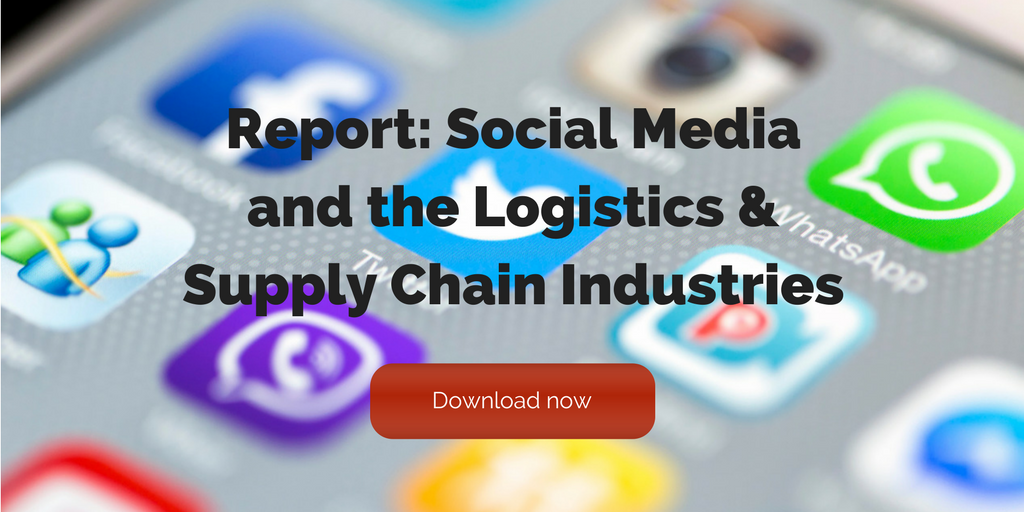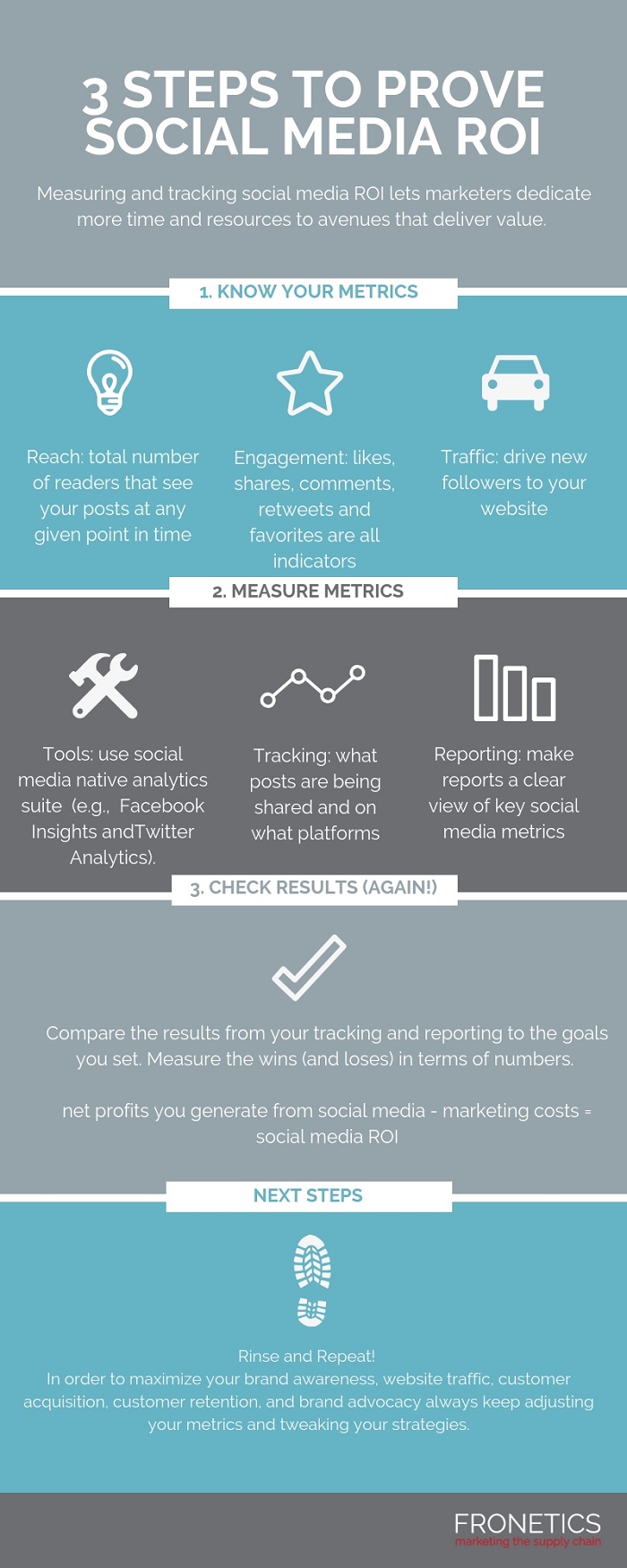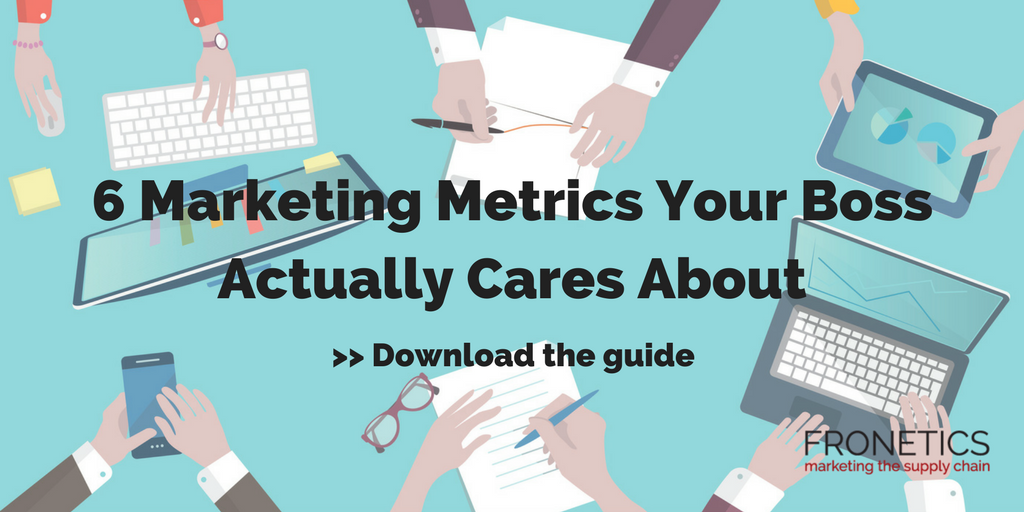
by Jennifer Hart Yim | Oct 30, 2018 | Blog, Logistics, Supply Chain
In order to transform and mature, these supply chain elements need to be incorporated into a brand’s foundation: stakeholder alignment, visibility, and role clarity.
This guest post was written by Paul Rea for Argentus Supply Chain Recruiting, a boutique recruitment firm specializing in Supply Chain Management and Procurement.
I’ve spent my professional life working in and leading industrial and consumer product supply chains. They all have the same foundational needs that I group into three general areas: Stakeholder Alignment, Visibility, and Role Clarity. Organizations with mature supply chains will likely have this embedded in their DNA already. Immature supply chains that are looking to transform from something reactive to far more collaborative and effective may not. They need to. Supply Chains without these elements are likely incapable of further transformation and maturation.
1. Stakeholder Alignment:
 Communicate, collaborate and communicate some more. Find out where you (and everybody else) are going.
Communicate, collaborate and communicate some more. Find out where you (and everybody else) are going.
Supply Chain is a river running through the company, winding through geography, and facilitating and transporting so much commerce. The vision driving supply chain needs to be completely aligned with its stakeholders and corporate strategy. Even between the rudimentary goal posts of cost containment and service delivery, supply chain needs to consider its internal stakeholders in commercial, finance, manufacturing, regulatory, quality etc. as they all influence, and require support from, the supply chain. Imagine a team that set out to drive costs from the network by extending transit times and managing waste and inventory to that perfect “Lean” minimalism. They have potential problems in a speed to market centric sales strategy. Supply chain needs to be at the table when key commercial strategies are being set or the team and potentially the organization run the risk of fatal mis-alignment. Then, ongoing planning and execution should be managed through a Sales and Operations Planning process (S&OP).
I’ve used internal alignment examples, but the supply chain has many external stakeholders too, not the least of which are 3rd party partners and the customers themselves. The same principles apply. In many cases supply chain will use sales/marketing initiatives as the proxy for the customer’s voice, but it’s not unreasonable to conduct supply chain reviews with key customers. Regular planner to planner (vendor to customer) interfaces are key to day to day supply chain management success. (note: The entire concept of vendor management falls within this bucket.)
2. Visibility:
You must be able to see what you’re doing, and the numbers should add up.
Think of the vast amount of end to end supply chain activities that live outside your walls, from overseas suppliers to 3rd party finished goods DC’s, not to mention the holy grail of supply chain planning itself; the demand signal. Too often people don’t look past their own ERP when thinking of supply chain planning, management and execution. Holistic, managed visibility is critical as complexity or channel distance grows. Remember Mr. Drucker’s “what gets measured gets managed”.
This is more than data and some KPI’s. It requires the right granularity. A monthly KPI may mask what actually happens every Tuesday afternoon. Data and averaged metrics without meaningful analysis and management are dangerous to supply chain. Inventories (raw and finished), transit times and supplier lead times all need to be continually assessed against good demand forecasts, marketing programs and other requirements. The numbers also need to be as real as possible. “System” inventories must match real inventories or there could be a serious mis-fire on a reorder point. Actual transits need to be reviewed in real time. Imagine the manufacturing lead time chaos created if import raw materials were simply presumed to be hitting the port on schedule from when a P.O. was cut (manually or out of an MRP system). Visibility goes far beyond data itself, and an expectation of disciplined regular monitoring and management has to sit on top of the data.
3. Role Clarity:
Get organized.
Supply Chain is a team sport. Silo-ed, uncoordinated (different than decentralized) or poorly staffed supply chain structures can result in decisions that sub-optimize the whole or outright conflict with each other. Even “segmented” channels need to be considered in the whole, somewhere. Supply chains can be complex and distant requiring constant attention. You must invest in either robust tools supporting the process or appropriate head count to compensate. This breaks into a couple of key elements:
a) The specific jobs or activities. Generally the key aspects of Supply Chain management are Purchasing (sourcing), Planning (scheduling) and Logistics (delivery). Sometimes logistics is separate, and procurement may be included with Purchasing, depending upon how location specific the procurement activities are. Manufacturing (make) is often structurally not part of the actual Supply Chain team but is literally surrounded by it and the activities are highly interdependent. In the preferred model of a demand driven Supply Chain a demand forecast drives both production planning and supply chain planning which in turn drives procurement directly and purchasing strategically. Purchasing is also influenced by the forecast directly.
Supply Chain planning and demand planning are different. The demand planner’s role is to be the custodian of a high level of forecast accuracy compared to actual demand. If there is not a credible owner of demand planning (beyond finance gathering forecast data) in the organization then supply chain needs to account for that. I can’t over-emphasize the importance of a good item, location and time sensitive demand forecast to supply chain’s success. Think of it like a TV picture where the demand/forecast is the cable signal input and Supply Chain is the TV set itself. Regardless of how fantastic the set is if the input signal is poor or corrupt the picture on the set will be bad. And there’s very little the rest of the Supply Chain group can do to fix it other than educated guesses.
b) The talent itself. Make sure you staff the right people. Internal moves are great because they shorten or eliminate the company specific learning curve and can further employee development and engagement, but it can be dangerous to be a completely “homegrown” supply chain team. Its like running a race with an in experienced pit crew. Never be afraid to go outside and get the appropriate talent if you don’t have it internally. Jane may be a great performer in sales but does that mean she would necessarily succeed in accounting? Why then, supply chain.
Related posts:

by Fronetics | Oct 17, 2018 | Blog, Content Marketing, Logistics, Marketing, Strategy, Supply Chain
Wondering whether you should be prioritizing building traffic or optimizing for conversions? Here’s the case for each.
I currently have a client trying to decide what to prioritize: building traffic to his website or optimizing current content for lead conversions. It’s a chicken-and-egg-style debate. If you don’t increase traffic, who will be on your site to convert? But, if you don’t optimize for conversion, what good is traffic to your website?
As with any chicken-or-egg question, there is neither a simple nor a definitive answer. What you should prioritize at any given time is highly individual, and dependent on factors unique to your business. Consider the case for prioritizing each, while evaluating and bearing in mind where your business is in building its online presence.
The egg: the case for prioritizing traffic
Maybe you’re confident the egg came first—after all, in some ways, it’s the obvious answer. Without traffic to your website, there’s not much point in optimizing for conversion, since there won’t be any leads to convert in the first place. According to AudienceBloom founder and CEO Jayson DeMers, there are three main points to the case for prioritizing traffic:
1) Brand recognition
Conversions aren’t the only thing of value that comes from a traffic-heavy website. “Every visitor who makes it to your site will have the chance to see your brand, read your content, and become more familiar with your company,” says DeMers, writing for Forbes. Building traffic to your website lets you reap these benefits, which will naturally drive up your conversions over time.
2) Long-term strategies
Because effective traffic-building strategies pay off exponentially the longer they’re in place, it makes sense to put them first. Giving your SEO and content marketing efforts time to build momentum ensures that you’ll reap the maximum benefits.
3) Optimizing for value
The best way to determine if your conversion strategy is working and how to improve it is to collect and analyze data. A high traffic volume gives you a testing ground. “Without a steady stream of visitors to test,” says DeMers, “you’ll be flying blind.”
The chicken: the case for prioritizing conversions
Maybe you’re one of those people who wonders where the egg comes from in the first place. While it’s true that without traffic, conversions are unlikely, it’s equally true that a website that isn’t optimized for conversions is not to your best advantage. DeMers again sums up the three main arguments for prioritizing conversion optimization:
1) Low investment, high yield
One of the best things about conversion optimization is that, while it does require ongoing efforts, your initial process is relatively cheap and easy. Check out our guide for creating effective landing pages, for example, and you’ll discover that optimizing for conversions doesn’t have to break the bank.
2) Traffic optimization
This is where quality is more valuable than quantity. “Focusing on conversions first instantly makes every visitor to your website more valuable,” says DeMers. Even if your traffic volume isn’t massive, if your conversion rate is higher, you’re ahead at the end of the day.
3) Reinvestment potential
If your business has limited funds to invest in website optimization, prioritize conversions. “Assuming your conversion strategy is successful early on,” writes DeMers, “the extra revenue you’ll generate from all your new traffic will give you more money you can use to invest further — in the realms of both traffic and conversion.”
The scramble: why you should balance your efforts
[bctt tweet=”Whether you chose to place a heavier emphasis on traffic or conversions, you ultimately want balance in your efforts. “If you fully invest in either side without investing at least slightly in the other, you aren’t going to see meaningful results,” points out DeMers.” username=”Fronetics”]
Whether you chose to place a heavier emphasis on traffic or conversions, you ultimately want balance in your efforts. “If you fully invest in either side without investing at least slightly in the other, you aren’t going to see meaningful results,” points out DeMers.
So far, science hasn’t been able to settle the chicken-or-egg question. In the same way, we can’t tell you whether it makes sense for you to put a higher priority on traffic or conversion optimization. But thinking through the case for each should help you decide what makes sense for your business. Just remember not to put all your eggs in one basket.
Related posts:


by Fronetics | Oct 11, 2018 | Blog, Content Marketing, Current Events, Logistics, Marketing, Social Media, Supply Chain
Consider these chatbot platforms for supply chain operations that can help you create artificial intelligence bots to interact with your prospects.
Chatbots are on the lips of every marketer these days hoping to automate some of their processes. These artificial intelligence computer programs are designed to conduct conversations, simulating how a human would interact. If you haven’t already, check out this introduction to chatbots for the supply chain.
[bctt tweet=”Chatbots are on the lips of every marketer these days hoping to automate some of their processes. These artificial intelligence computer programs are designed to conduct conversations, simulating how a human would interact.” username=”Fronetics”]
There are countless options for platforms that let you create and customize chatbots. Here are the 5 most important chatbot platforms for supply chain operations to know and consider integrating into their websites.
5 chatbot platforms for supply chain operations
1. Chatfuel
Chatfuel is a great option for marketers who lack programming experience, as it does most of the hard work for you. Reportedly used by companies including MTV, TechCrunch, BuzzFeed, British Airways, and Adidas to create their chatbots, Chatfuel provides easy-to-use resources with a simple user interface that lets you create a chatbot in less than 15 minutes.
2. ChatScript
ChatScript is a four-time winner of the Loebner Prize for the most human-like artificial intelligence. While it doesn’t require advanced programming knowledge, it provides an open-source framework for developers to build and deploy chatbots.
3. Facebook Bots for Messenger
Facebook’s Bots for Messenger is a tool that allows businesses to build chatbots for Facebook’s Messenger platform (which is currently used by nearly a billion people). Its three main capabilities are its send/receive API, generic message templates, and the ability to customize the welcome screen users first see when interacting with your bot.
4. Botsify
A popular chatbot platform, Botsify lets anyone create bots easily without needing to write any code. It provides templates with a range of drag-and-drop functionalities. Additionally, it boasts human takeover ability to ensure a smooth transition from a bot to a human at the appropriate point in the sales funnel.
5. Flow XO
This platform offers the templates and tools necessary to create a talking bot, and lets you run and test functionalities with a built-in test console. Flow XO also offers a provision for you to connect with your customers over voice and chat when required in the conversation.
While email marketing continues to be a key tactic, marketing via messaging apps is becoming more and more expected. These chatbot platforms for supply chain operations offer ease, convenience, and a positive customer experience. They’re worth considering!
Related posts:


by Fronetics | Oct 9, 2018 | Blog, Content Marketing, Logistics, Marketing, Social Media, Supply Chain
Instagram for business is a rising trend. Here’s how to use the platform to connect with your audience in a personal way.
Recent research on social media use shows that 66% of brands now use Instagram. It’s the second-most used platform by businesses, up from fourth in 2017.
[bctt tweet=”Recent research on social media use shows that 66% of brands now use Instagram. It’s the second-most used platform by businesses, up from fourth in 2017.” username=”Fronetics”]
If you’re considering using Instagram for your business, which you should be, here are some tips for getting started.
How to use Instagram for business: 10 tips
1) Be authentic
Brands often fall into the trap of using stock photography and images or overly staged promotional pictures. The ethos of Instagram is all about authenticity and personality. Let your audience get an up close and personal glimpse into your company’s culture.
2) Go live
Live video is the “it” trend in social media marketing, with 61% of marketers reporting that they plan on adding it to their overall strategy. Audiences love real-time content, and it lets them feel a genuine, human connection — the creation of which sometimes poses a challenge for B2B marketers.
3) Keep up the pace
Instagram is one of the easiest social media platforms to post on. That means you can quickly snap photos wherever you are — say, at a conference or event, or even on your way into the office — and publish it instantly. This is great for reaching the coveted millennial audience, which seems to have an unquenchable thirst for consuming content, particularly images and graphics.
4) Get in the “in crowd”
As with every social media channel, what you post is important. But it’s just as important that you participate in the wider conversation going on within your industry. This means replying to your community when they leave responses and interacting with peer businesses and influencers’ posts.
5) Use the link in your bio
A frequent challenge for new Instagram users is that the platform doesn’t allow you to link from the captions of posts. You get once chance to link, and it’s in your bio. You can vary the link as you promote specific content or product offers, and you can even use tools like Linktree to create a custom link that includes a page with additional links.
6) Be a storyteller
Instagram is all about visual storytelling. Your posts should do more than promote your brand — they should be drawing in your audience with narrative told through a visual format. Instagram Stories are an ideal way to engage your audience!
7) Try a takeover
Taking over the Instagram account of a partner company or customer is a great way to draw attention from an existing and relevant audience, providing mutual benefits to both parties.
8) Get personal
Go in deep and personal with your customers by answering their questions via 10-second videos. You let your viewers feel like they’re being heard. Plus, short videos are ideal for reposting.
9) Deliver special offers
Instagram is a great way to give special offers to your followers who tune in to your Stories. The time-sensitive feature (Stories expire after 24 hours) urges prospects to engage with your Story and act quickly before the offer expires.
10) Out of ideas? Just ask!
Survey your followers by posting a graphic of some options for future content or offers but leave it open-ended as well. Be sure to respond to suggestions in direct messages or comments. You may get some great ideas you never would have considered!
How do you use Instagram for business?
Related posts:


by Fronetics | Oct 3, 2018 | Blog, Content Marketing, Data/Analytics, Logistics, Marketing, Social Media, Supply Chain
Use these three steps to calculate your social media ROI and prove the value of your investment.
As supply chain and logistics businesses are finally recognizing the merits of content marketing, and more specifically social media platforms, many are looking into implementing a program at their companies. But it doesn’t take much research to realize what an enormous investment it is. And how difficult it can be to prove social media ROI.
We understand the time and money it takes to successfully implement and manage a social media strategy as a part of your content marketing plan. Many companies we talk to need help convincing management that it’s a worthwhile investment. To that we say, use data!
[bctt tweet=”We understand the time and money it takes to successfully implement and manage a social media strategy, as a part of your content marketing plan. Many companies we talk to need help convincing management that it’s a worthwhile investment.” username=”Fronetics”]
But what data should you use? How do you quantify certain benefits, like growth in brand awareness? And do you really have to keep track of all the hours you spend managing social media, crafting new tweets, etc.?
Here are three simple steps to start proving your social media ROI.
Infographic: 3 steps to prove social media ROI

(Made with Canva)
Final thoughts
Once you’ve calculated ROI for your social media platforms, it’s time to think strategically about optimizing your content marketing resources in terms of allocation and timing. Having hard data helps you answer questions about which initiatives are most fruitful, what language engages your audience best, when your efforts are most likely to pay off.
Ultimately, this data-driven approach lets you continually adapt to the needs of your audience, ensuring an ongoing, robust ROI.
Have you had to prove your social media ROI? What strategies did you use?
Related posts:


 Communicate, collaborate and communicate some more. Find out where you (and everybody else) are going.
Communicate, collaborate and communicate some more. Find out where you (and everybody else) are going.








